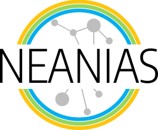The article “New frontiers in computing and data analysis – the European perspectives” by Ugo Becciani & C. Petta, was published online at tandfonline.
Ugo Becciani and the National Institute for Astrophysics (INAF) are participating in NEANIAS project, performing many activities related to the Space environment and the development of the space services. NEANIAS and the consortium have been included among their acknowledgements.
Abstract
Nowadays, Europe is heavily engaged in the evolution of a new generation of high-performance computing (HPC), and new perspectives are looking at the emerging computational era called exascale. The presence of converging, domain-independent interests on Big Data among different communities, from Information Communication Technologies (ITC) to Life Sciences, Physics, Astrophysics, Space Sciences and many other fields, as well as the development of new skills, is leading to the establishment of specific collaborations with the aim of exploiting knowledge, capacities and research and innovation potential from different communities. The new program of Europe (named EuroHPC) is encouraging the sharing of these experiences and the cooperation between different entities like scientific research centers, small and medium-sized enterprises (SMEs) and private industries, for joint actions and the development of new skills in the Big Data and artificial intelligence (AI) domains. This program has two main pillars: ‘Supercomputing and Data Infrastructure Programme’ to deliver two world-class precursors of exascale supercomputers on 2020 and ‘Research and Innovation Programme’ on HPC to support the development of European supercomputing technology with the co-design of European exascale machines and to foster applications, skills development and a wider use of the new generation of computing systems. The co-design of these new systems, considering the big amount of data they need to handle with increasingly complexity, will also drive the development of a new generation of artificial intelligence techniques and visual analytics systems to underpin more accurate investigations. This paper is an analysis of the evolution of computing from a European perspective, looking at new generation systems and data analysis techniques in the era of Big Data, illustrating ideas with examples developed within the context of a specific physics field.
Acknowledgements
We thank the Cineca, Italian supercomputing center, and in particular Dr Sanzio Bassini and Dr Carlo Cavazzoni for useful information on EuroHPC programs and roadmaps. We also thank the NEANIAS project consortium for providing useful information on services on the EOSC-hub platform. Finally, we thank the AENEAS project consortium for the SKA data and services.
Get the full article at www.tandfonline
